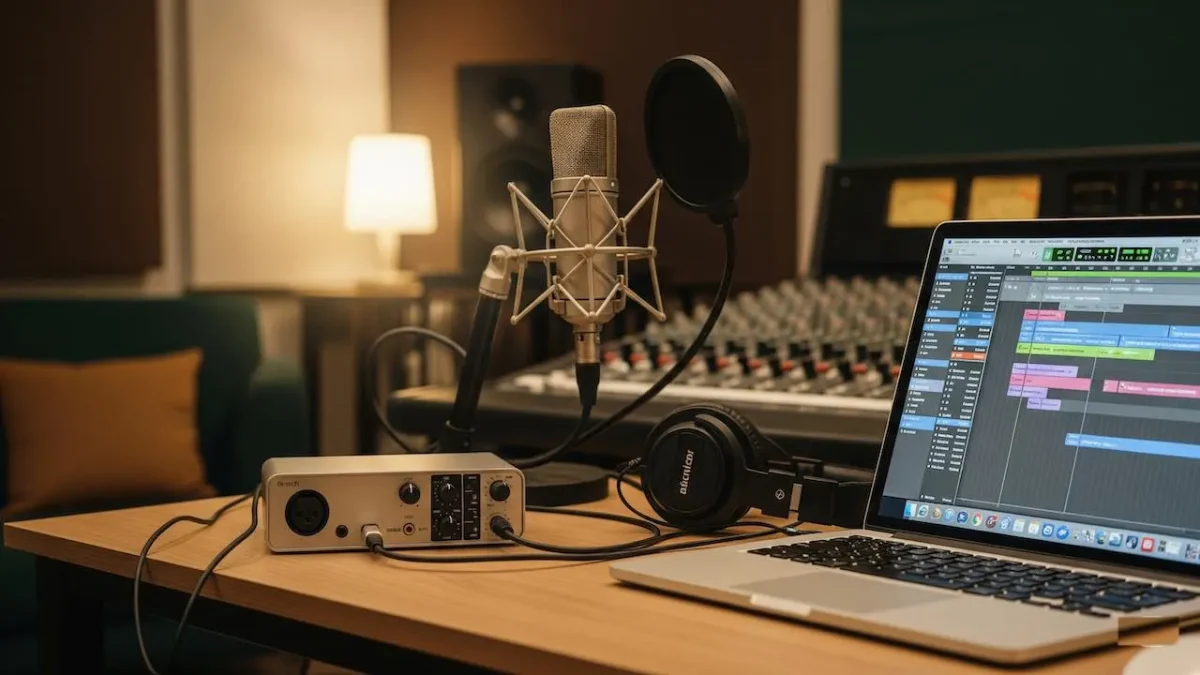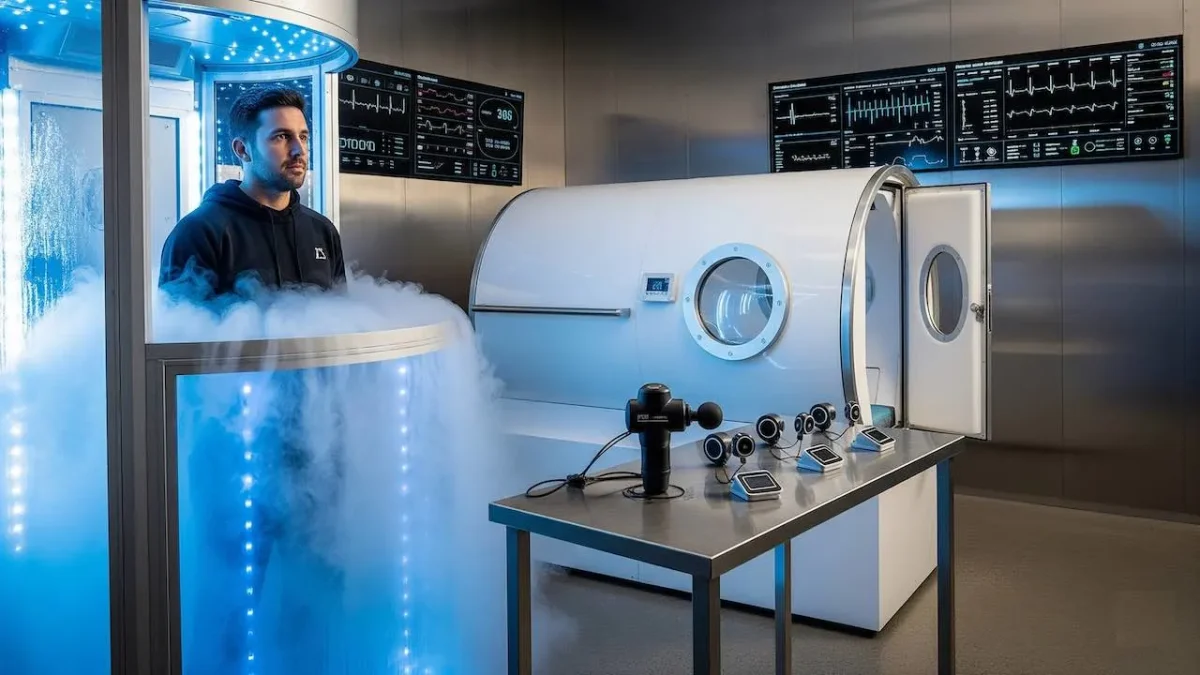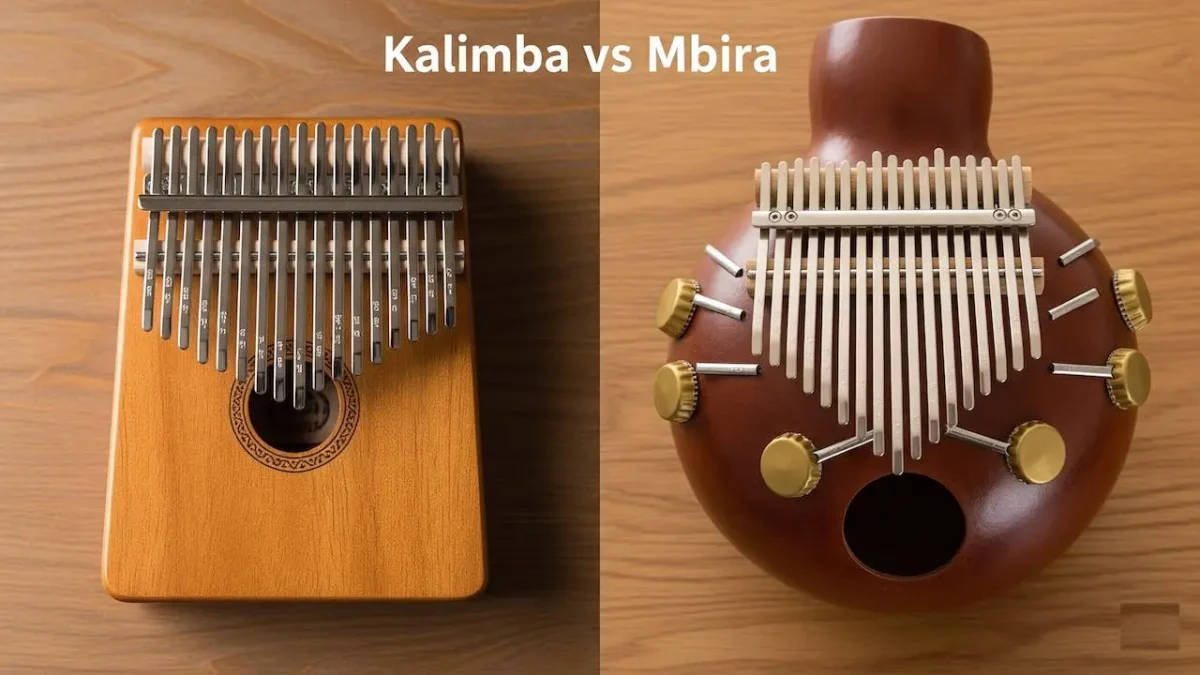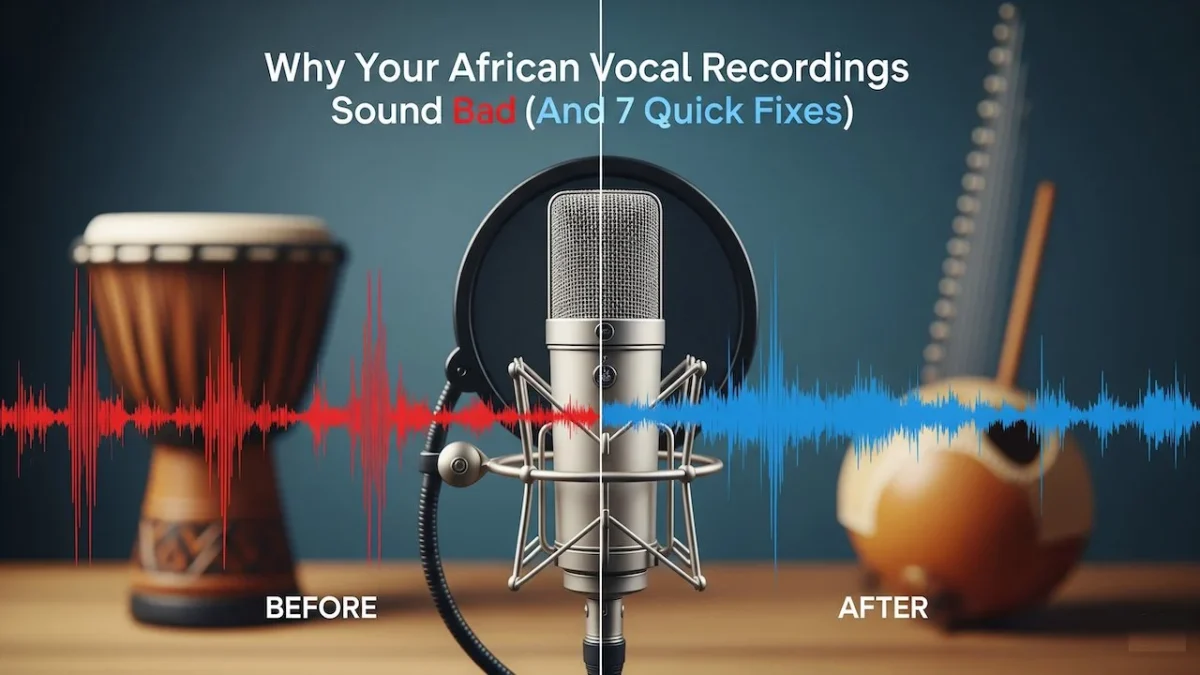
How to Make Your Home Studio Sound Like Abbey Road (On a $500 Budget)
You can achieve Abbey Road’s legendary sound quality for under $500 by focusing on four key elements: acoustic treatment ($150), quality microphones ($180), audio interface ($120), and studio monitors or headphones ($50). Abbey Road takes you through seven essential pieces of studio equipment required to get you up and running, and professional home studios can deliver exceptional results with strategic equipment choices.
Building a bedroom studio that captures the magic of Abbey Road Studios doesn’t require spending thousands. The secret lies in understanding what makes Abbey Road special and replicating those characteristics with affordable alternatives. Many artists have created chart-topping music in bedroom studios using similar budget setups for home recording projects.
Essential Equipment for Your Abbey Road Home Studio
Start with these five core components that form the foundation of any professional recording space. Each item serves a specific purpose in recreating that warm, detailed Abbey Road sound signature for your home recording studio setup.
| Equipment | Budget Option | Price Range | Abbey Road Alternative |
|---|---|---|---|
| Audio Interface | Focusrite Scarlett 2i2 | $120-160 | Professional preamps with clean gain |
| Condenser Microphone | Audio-Technica AT2020 | $99-149 | Large diaphragm quality for vocals |
| Studio Monitors | JBL 104 or Presonus Eris E3.5 | $99-149 | Accurate frequency response |
| Studio Headphones | Sony MDR-7506 | $79-99 | Industry standard reference monitoring |
| Acoustic Treatment | Moving blankets plus bass traps | $50-100 | Room control and reflection management |
Audio Interface: Your Digital Gateway for Recording
The Focusrite Scarlett 2i2 is an ever-popular option, featuring two preamps and hybrid XLR/TS inputs for microphones or line-level instruments for around $160. This interface provides clean, transparent preamps similar to those found in Abbey Road’s mixing consoles. The 24-bit/192kHz conversion ensures your recordings maintain professional quality throughout the signal chain for music production.
Alternative budget options include the Behringer UMC22 for under $50, though you sacrifice some preamp quality. The PreSonus AudioBox USB 96 offers a middle ground at $99, providing solid performance for singer-songwriters and small home recording projects.
Microphones That Capture the Abbey Road Magic
The Audio-Technica AT2020 is a popular choice among budget-conscious producers, offering excellent vocal clarity and detail for bedroom recording. A workhorse would be dynamic mics like Shure SM57, SM58, or Audio Technica AT202. These are tried and tested classics that yield good results with practically anything you throw at them in your home studio setup.
For versatility, pair a condenser microphone like the AT2020 ($99) with a dynamic microphone such as the Shure SM57 ($99). This combination covers vocals, acoustic instruments, guitar amplifiers, and drum recording. The SM57 particularly excels on guitar cabinets, replicating the punchy sound heard on countless Abbey Road recordings for music producers.
Room Acoustics: The Secret Ingredient for Professional Sound
Room treatment makes the biggest difference in achieving professional sound quality in your bedroom studio. Abbey Road’s studios feature carefully designed acoustic spaces, and you can approximate this with strategic placement of absorption and diffusion materials for your home recording environment.
DIY Acoustic Treatment Solutions for Bedroom Producers
Moving blankets provide excellent broadband absorption for $30-50. Hang them on walls behind your monitoring position and across from your recording area. These reduce reflections that muddy your recordings and monitoring accuracy in small spaces like bedrooms.
Create bass traps using rockwool or fiberglass insulation wrapped in fabric. Place these in room corners where low-frequency energy accumulates. One of the most important parts of a home studio is the room, and controlling bass buildup dramatically improves your mix translation for bedroom producers.
| Treatment Type | DIY Solution | Cost | Placement for Best Results |
|---|---|---|---|
| Broadband Absorption | Moving blankets or foam panels | $30-50 | First reflection points on walls |
| Bass Traps | Rockwool plus fabric wrapping | $40-60 | Room corners and wall intersections |
| Diffusion | Bookshelves with books | $20-40 | Rear wall behind listening position |
| Isolation Pads | Yoga mats under speakers | $15-25 | Under studio monitors to reduce vibration |
Monitor Placement for Accurate Sound in Small Rooms
Position your speakers at ear level, forming an equilateral triangle with your listening position. The ADAM Audio T5V Studio Monitors are a great choice for home studios, as they provide clear and accurate sound at an affordable price point, though they exceed our budget for bedroom recording setups.
Budget alternatives like the JBL 104 ($99) or PreSonus Eris E3.5 ($99) provide solid monitoring capabilities for home recording projects. Angle speakers slightly toward your ears and maintain 3-6 feet distance for optimal stereo imaging in bedroom studios.
Recording Software and Plugins for Abbey Road Sound
Free DAW software like GarageBand (Mac) or Reaper (60-day trial, $60 license) provides professional recording capabilities for music production. These platforms include built-in effects that can approximate Abbey Road’s classic processing chains for bedroom producers.
Free Plugins That Recreate Classic Vintage Sounds
Download these free plugins to add vintage character to your home recordings:
- TDR Nova – Dynamic equalizer for precise frequency shaping in home studios
- Klanghelm MJUC – Variable-mu compressor modeling vintage units used at Abbey Road
- Valhalla Supermassive – Reverb and delay for spacious sounds in bedroom recordings
- Saturation Knob – Adds harmonic warmth and character to digital recordings
- Limiter No6 – Transparent limiting for professional loudness standards
These plugins emulate the types of processing used on classic Abbey Road recordings. Layer subtle amounts of each to build rich, dimensional sounds without obvious digital artifacts in your home recording projects.
Recording Techniques from Abbey Road Engineers
Abbey Road engineers pioneered many recording techniques that you can apply in your bedroom studio. These methods focus on capturing great performances rather than fixing problems in post-production for music producers.
Microphone Positioning Secrets for Home Recording
Place vocal microphones 6-12 inches from the singer’s mouth, slightly off-axis to reduce plosives and breathing sounds. For acoustic guitar, position the microphone toward the 12th fret, 8-12 inches away. This captures both string detail and body resonance in small recording spaces.
Record guitar amplifiers using the “speaker edge” technique. Position your SM57 at the edge of the speaker cone, angled slightly toward the center. This reduces harshness while maintaining punch and clarity for bedroom recording sessions.
Layering and Arrangement Philosophy for Small Studios
Abbey Road productions feature careful arrangement where each element occupies its own frequency space. Start with a strong foundation of drums and bass, then add melodic elements that complement rather than compete in your home recording projects.
Record multiple takes of vocals and harmonies. The Rode NT1A is a great choice of vocal microphone. Paying a bit of homage to the famed Neumann U87, it costs a fraction of Neumann’s $3,700 retail price tag: $229, though the AT2020 provides similar quality for bedroom producers.
Mixing Like Abbey Road on a Tight Budget
Abbey Road mixes emphasize balance, depth, and musical dynamics. Apply these principles using your budget setup and free plugins for professional home recording results.
EQ and Compression Strategies for Bedroom Studios
Use gentle EQ curves rather than aggressive cuts and boosts in your mixing process. High-pass filter most instruments around 80-120 Hz to clean up low-end mud. Add subtle high-frequency sparkle around 10-15 kHz for air and presence in home recordings.
Apply compression conservatively with slow attack times to preserve transients. Aim for 2-4 dB of gain reduction on vocals and 1-3 dB on instruments. This maintains dynamics while adding cohesion to your mix in bedroom recording environments.
Reverb and Spatial Effects for Small Room Recording
Create depth using multiple reverb sends with different decay times for your home recording projects. Use short reverbs (0.8-1.5 seconds) for drums and percussion, medium reverbs (2-3 seconds) for vocals, and longer reverbs (4+ seconds) for atmospheric elements.
Pan instruments across the stereo field to create width in bedroom recordings. Keep bass, kick drum, snare, and lead vocals centered. Place supporting elements like guitars, keyboards, and backing vocals in the sides for professional sound.
Monitoring and Reference Techniques for Home Studios
For under $100, you can get some of the best studio headphones on the market, including the Sony MDR 7506 that was used by legend Mick Jagger. These headphones provide accurate monitoring when studio monitors aren’t available or practical for bedroom recording sessions.
The AKG K52 offers a great depth of nuance, very comfortable (essential when you’re spending long hours tweaking a drum snare sound), great value for money, and retro-stylish to boot. The Sennheiser HD280PRO’s are an industry-standard alternative for closed-back monitoring in home recording environments.
Reference Mixing Workflow for Bedroom Producers
Compare your mixes to professionally produced tracks in similar genres. Load reference songs into your DAW and match their overall tonal balance and dynamics. This trains your ears and improves your mixing decisions for home recording projects.
Check your mixes on multiple playback systems including car speakers, earbuds, and laptop speakers. Great mixes translate well across different monitoring environments, just like classic Abbey Road productions for music producers.
Building Your Home Recording Studio in Phases
Start with core essentials and expand gradually. Begin with an audio interface, condenser microphone, and studio headphones for $250-300. Add studio monitors and acoustic treatment as budget allows for your bedroom recording setup.
Phase 1: Recording Essentials for Beginners ($250)
- Focusrite Scarlett Solo – $120 for clean preamps
- Audio-Technica AT2020 – $99 for professional vocal recording
- Sony MDR-7506 headphones – $79 for accurate monitoring
Phase 2: Monitoring Upgrade for Better Mixing ($150)
- JBL 104 studio monitors – $99 for near-field monitoring
- Basic acoustic treatment – $50 for room improvement
Phase 3: Expansion for Versatility ($100)
- Shure SM57 dynamic microphone – $99 for instrument recording
- XLR cables and microphone stand for professional setup
Computer Requirements for Home Recording Projects
A laptop or desktop PC with at least 16GB of RAM, running on a Core i5 processor is a good start for music production. Budget-friendly options include the Apple Mac Mini for compact power or Dell Inspiron 15 3000 with solid performance for bedroom producers.
Your recording software (DAW) will be the heart of your home studio setup. Popular choices include Logic Pro for Mac users, Ableton Live for electronic music creators, and Pro Tools for traditional recording workflows used by professional studios.
Essential Accessories for Professional Home Recording
Don’t forget these often-overlooked items that make a big difference in your recording quality:
- Pop filter for condenser mics – Prevents plosive sounds in vocal recordings ($15-25)
- Microphone stand with boom arm – Proper positioning for optimal sound capture ($30-50)
- XLR cables (balanced) – Clean signal transfer without interference ($20-30)
- Closed-back headphones – Prevents bleed during overdubbing sessions ($50-100)
- Direct injection box – Clean guitar and bass recording without amplifiers ($40-60)
Recording Tips for Professional Results in Bedroom Studios
Before you begin your recording session, take a good listen to your environment. Is the air conditioner running? How about the fridge? Background noise can ruin otherwise perfect takes in home recording environments.
Get closer to the microphone for professional sound quality. Record vocals just a few inches away if possible, but things can still be improved greatly by having a mic just a foot or two away for bedroom recording sessions.
When choosing a space to record, remember two things: avoid low ceilings and square rooms. Because of the physics of sound waves, low ceilings reflect sound, resulting in muddy and unclear microphone recordings for home studios.
People Also Ask
Yes, modern budget equipment can achieve professional results when combined with proper technique and room treatment. The key lies in understanding acoustics and using quality microphones with clean preamps in your bedroom recording setup.
Abbey Road’s legendary sound comes from excellent room acoustics, high-quality equipment, and experienced engineers. You can approximate these qualities with careful equipment selection and acoustic treatment in your home studio environment.
$500 provides a solid foundation for professional recordings when spent wisely on essential equipment. Focus on acoustic treatment, a quality microphone, reliable audio interface, and accurate monitoring rather than expensive gear for bedroom producers.
Abbey Road famously used custom EMI consoles, Neumann microphones, and specialized room designs. While original equipment costs thousands, modern budget alternatives can capture similar sonic characteristics through careful selection and technique.
Room acoustics account for 70% of your sound quality. Proper acoustic treatment makes budget equipment sound professional, while poor acoustics make expensive gear sound amateur. Invest in room treatment first for bedroom recording success.
Yes, free DAWs like GarageBand and Reaper provide professional recording capabilities. The software doesn’t limit your creativity or sound quality. Focus on developing skills rather than collecting expensive plugins for home recording projects.
Dynamic microphones like the SM57 are rugged and great for loud sources like guitar amps and drums. Condenser microphones like the AT2020 are more sensitive and capture detail making them perfect for vocals and acoustic instruments in bedroom studios.
Record during quiet hours, turn off air conditioners and appliances, and use moving blankets or foam panels to absorb reflections. Getting closer to the microphone also improves the signal-to-noise ratio for bedroom recording sessions.



